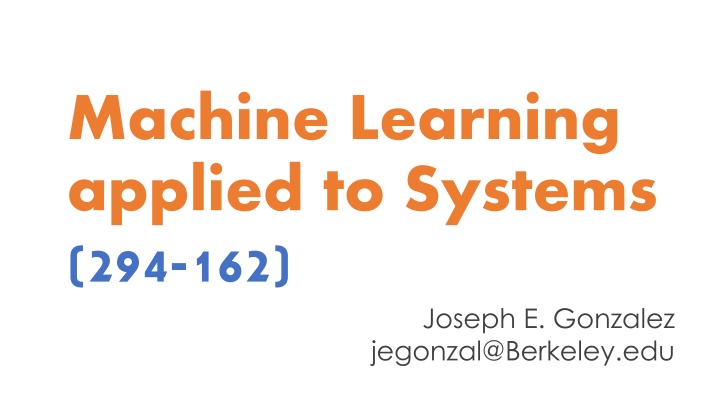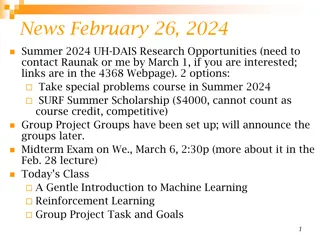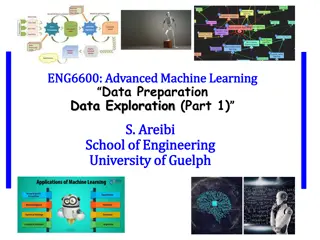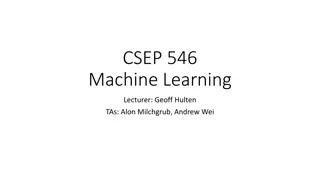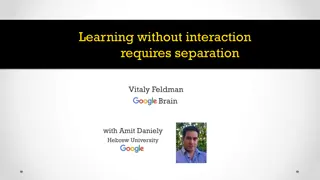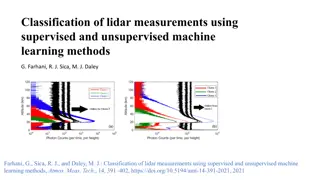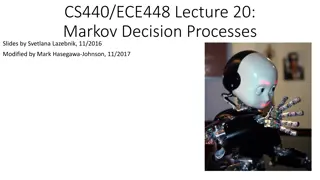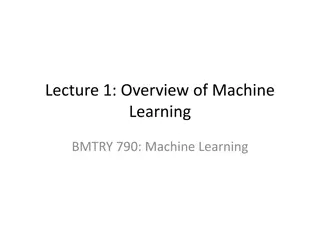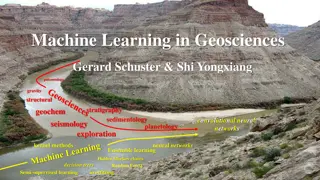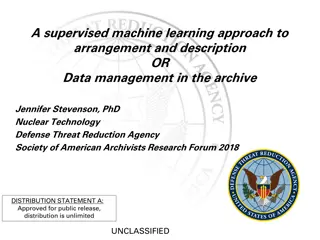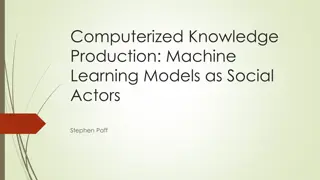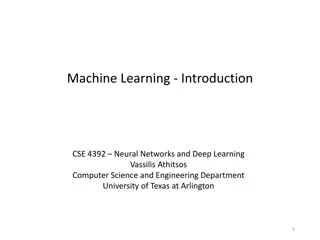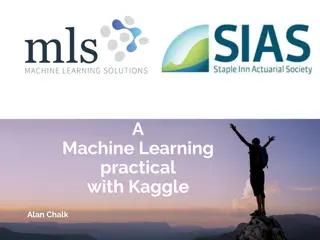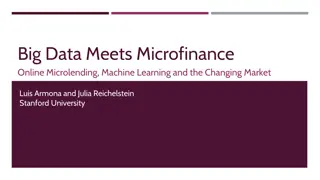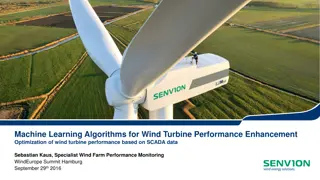Machine Learning in Systems: Optimal Policies and Applications
Applying machine learning to systems enables the creation of optimal policies and configurations that depend on input distributions and future states. Machine learning helps when system states are complex or partially observed, and when user objectives are unknown but indirectly observed. Explore the early successes and issues in applying machine learning to systems, along with the recent resurgence of interest in using machine learning for large-scale systems. Discover how learned index structures and reinforcement learning are revolutionizing system optimization.
Download Presentation

Please find below an Image/Link to download the presentation.
The content on the website is provided AS IS for your information and personal use only. It may not be sold, licensed, or shared on other websites without obtaining consent from the author.If you encounter any issues during the download, it is possible that the publisher has removed the file from their server.
You are allowed to download the files provided on this website for personal or commercial use, subject to the condition that they are used lawfully. All files are the property of their respective owners.
The content on the website is provided AS IS for your information and personal use only. It may not be sold, licensed, or shared on other websites without obtaining consent from the author.
E N D
Presentation Transcript
Machine Learning applied to Systems (294-162) Joseph E. Gonzalez jegonzal@Berkeley.edu
Why Apply Machine Learning to Systems Problems? Optimal system policies or configuration may depend on input distribution or future state System state can be difficult to model or partially observed User s objectives (utilities) may be unknown but indirectly observed
Early Success of Machine Learning in Systems Expert systems for hardware configuration selection XCON (late 1970s) Rule based system to chose optimal DEC VAX configuration Branch Prediction In general a learning based technique Perceptron branch prediction AMD Chips (2012) Downsides/issues? Learned cost models for query planning(early 2000s) Packet Classification without deep inspection (early 2000s)
Early Issues Applying ML to Systems Early ML techniques were brittle and difficult to tune Still are? Difficult to reason about failure-modes Heavy computational costs associated with ML Simple heuristics often good enough
Recent resurgence of interest in ML for Systems Large-scale systems have elevated the need for learning based approaches Recent progress in deep learning and its applications to hard problems has generated renewed interests Several recent efforts have demonstrated potential From this week s readings highlights 3 such papers
The Case for Learned Index Structures Explores the idea of leveraging over-fitting to replace memory intensive data structures with compute intensive models. Generated a lot of interests when first published Hacker News, Stanford Response Big issue -- updates -- is addressed in follow-up paper: ALEX: An Updatable Adaptive Learned Index
Device Placement Optimization with Reinforcement Learning High profile project at Google that generated a lot of interest in RL applied to systems problems Precursor to more recent high-profilechip design work by the same group
Neural Adaptive Video Streaming with Pensieve Widely cited paper applying RL techniques to address adaptive quality selection of streaming video. Addresses trends in earlier work that focused heavily on Throughput modeling Model predictive control Future Opportunities: this addresses an area of likely increased interests AR/VR Video Playback
Things to Ask when Applying ML to Systems Before you start: Is there structure in the problem being solved? Can an expert given enough time and experience with the system solve the problem ? Is the problem input dependent? Are there patterns in the input that can be modeled. Once you succeed, you should ask: What is being learned and in what way does your technique generalize? Did you just run weeks of random search to find a model that finds a good solution to a single problem. (overfitting?)
Some of My Experience with ML Applied to Systems Wireless Link Quality Estimation using GP Models: Failed Hope: Learn how radio waves propagate through environment using only pair-wise observation Problem: insufficient learnable structure Baseline distance model reasonable strong Deviation from baseline distance model is governed by complex interference that changes over cm distances. VM Selection for Workloads: Success Hope: Knowledge of the details of a workload and VM characteristics should determine performance Idea: Similar workloads should perform similarly across different VM Types Solutions: Collaborative filtering, modeling workload characteristics as a function of VM performance profiles.
